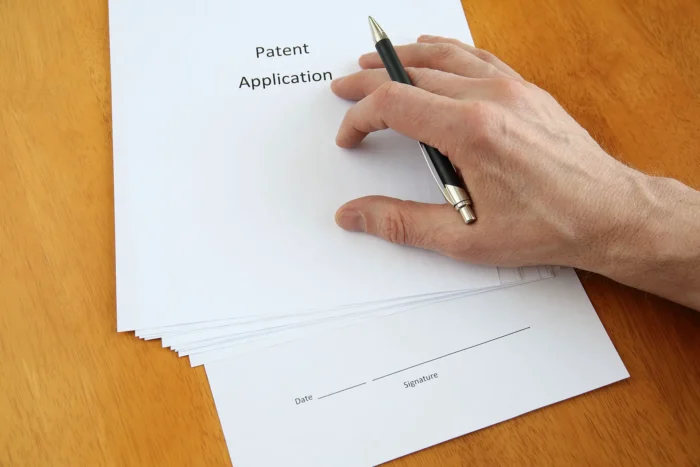In today’s fast-paced world, it’s essential to safeguard your innovation through patents. They provide legal protection, preventing others from copying or using your invention without your permission. In this step-by-step guide, we’ll walk you through the process of patenting your invention idea, ensuring that your hard work and creativity remain secure.
Understanding the Basics
Patents are like superhero capes for inventors. They’re exclusive rights granted by the government, giving inventors the power to control who can make, use, or sell their inventions. So, think of it as your secret weapon, shielding your invention from imitators.
There are different types of patents to suit various types of inventions. First, we have utility, which protects the functionality of a new process, machine, or composition of matter. Then there are design ones, which safeguard the ornamental appearance of a product. Lastly, plant ones protect new and distinct plant varieties that have been asexually reproduced. Each type has its own unique strengths and purposes, so you’ll want to choose the one that fits your invention like a glove.
Assessing the Patentability of Your Invention Idea

Before diving headfirst into the patenting process, you need to ensure your invention idea is novel. You don’t want to go through all the trouble only to find out someone beat you to it! To avoid disappointment, embark on a thrilling prior art search adventure. Look for similar inventions that have already been patented or publicly disclosed. Remember, the system rewards originality, so be a trailblazer, not a follower!
We’re not talking about writing a novel here, but it’s crucial to keep a record of your invention’s journey. Take detailed notes, draw sketches, snap photos—anything that helps capture the essence of your brainchild. This documentation will serve as your evidence of conception, making your application stronger and more convincing.
Engaging Professional Help
Not all superheroes wear capes; some wear suits and wield legal expertise. That’s where patent attorneys or agents come in. These professionals are your sidekicks throughout the patenting process, guiding you through the complex maze of patent law. They have the skills and experience to increase your chances of success, ensuring your application is filed correctly and protecting your invention from the clutches of evil copycats.
Choosing the perfect patent professional is crucial for your patenting adventure. You want someone who understands your invention and can effectively communicate its uniqueness. Seek recommendations from fellow inventors, do your research online, and schedule consultations. Remember, the right sidekick can make all the difference in your quest for patent protection! We advise you to check here and see for yourself the far-reaching importance of engaging professional help. It’s not just convenient, it is much more than that. In many cases, it is necessary.
Writing an application

Now it’s time to bring your invention to life on paper. An application is like a blueprint—it describes your invention in detail, revealing its inner workings and unique features. Write a clear and concise description, explaining how your invention solves a problem or improves upon existing technology. Use everyday language, avoiding jargon that would make even superheroes scratch their heads.
In the patent world, claims are the heart and soul of your application. They define the scope of your invention’s protection, akin to the limits of a superhero’s superpowers. Craft your claims carefully, making sure they are specific, innovative, and distinct from existing inventions. A strong claim will be your shield against copycats, allowing you to defend your invention’s uniqueness.
Filing the Application
It’s decision time! You have two main options for filing your application: provisional and non-provisional. A provisional application is like a sneak peek—it gives you an early filing date and allows you to use the coveted ” pending” phrase. On the other hand, a non-provisional application is a full package—it provides the complete disclosure needed for the examination. Choose wisely, young inventor!
Filing an application requires careful attention to detail. You need to complete the necessary forms, pay the fees, and provide supporting documentation. Think of it as embarking on a thrilling quest with a checklist of tasks to complete. Once you’ve assembled all the required elements, you’re ready to submit your application and set the wheels of patent protection in motion.
Navigating the Examination Process

Once your application is submitted, it undergoes examination by examiners. These meticulous gatekeepers assess your invention’s patentability, searching for any vulnerabilities. They review the prior art, evaluate your claims, and may request additional information. Think of them as the tough judges you need to impress to secure it.
The Battle Continues It’s rare to sail through the examination process without a challenge. Patent examiners may issue office actions, raising objections or rejections. Don’t lose hope! This is your chance to put on your inventor’s cape once again and fight back. Address their concerns, provide clarifications, and make your case stronger.
Maintaining and Enforcing Your Patent
But don’t get too comfortable—there are still battles to fight. To keep it in force, you must pay maintenance fees. Consider it an investment in the longevity of your invention’s protection. Neglecting these fees is like leaving your secret lair unguarded, inviting others to swoop in and claim your hard-earned rights.
As a patent holder, you’re now a defender of innovation. Keep a watchful eye on the market, searching for potential infringers who may attempt to exploit your invention. If you spot any suspicious activity, don’t hesitate to take legal action. A strong patent is your fortress, and you must protect it from those who seek to undermine your innovative powers.
Conclusion
By now, you understand the importance of protecting your innovation and have gained insight into the patenting process. Remember, innovation is the lifeblood of progress, and patents provide the armor to keep your ideas safe. So, equip yourself with knowledge, seek professional guidance when needed, and go forth with the confidence of a true inventor. The world is waiting for your groundbreaking ideas—let’s protect and unleash them together! You will thank us later and we will celebrate together.












